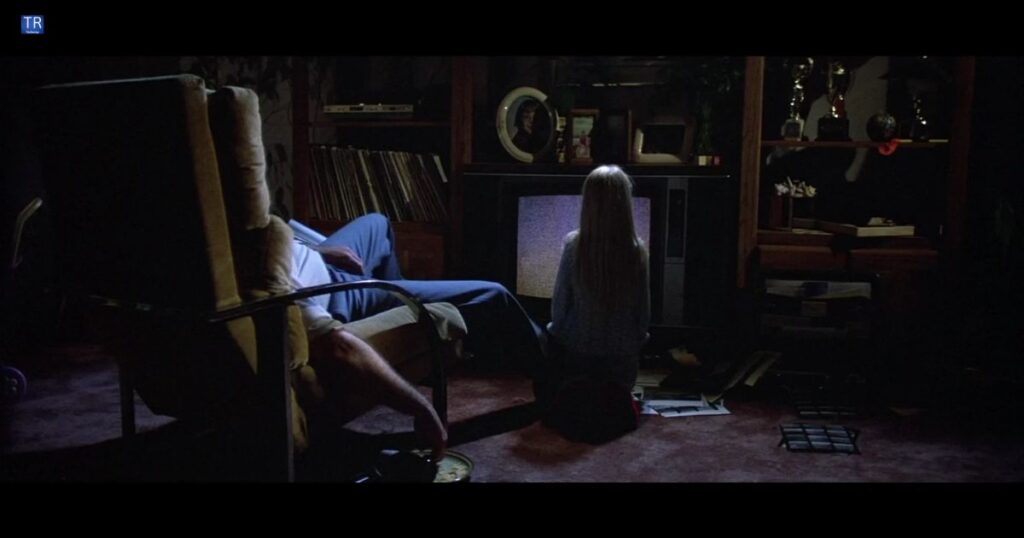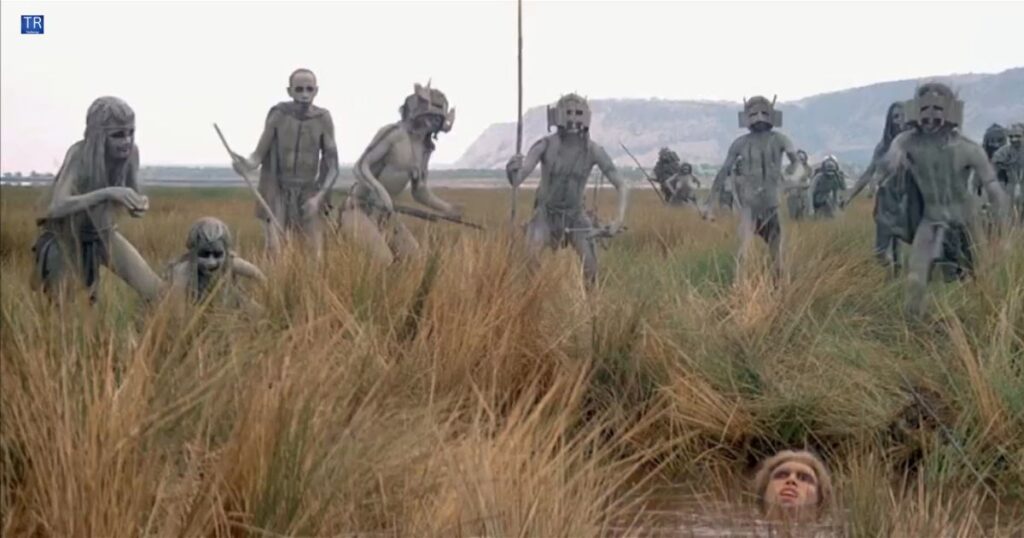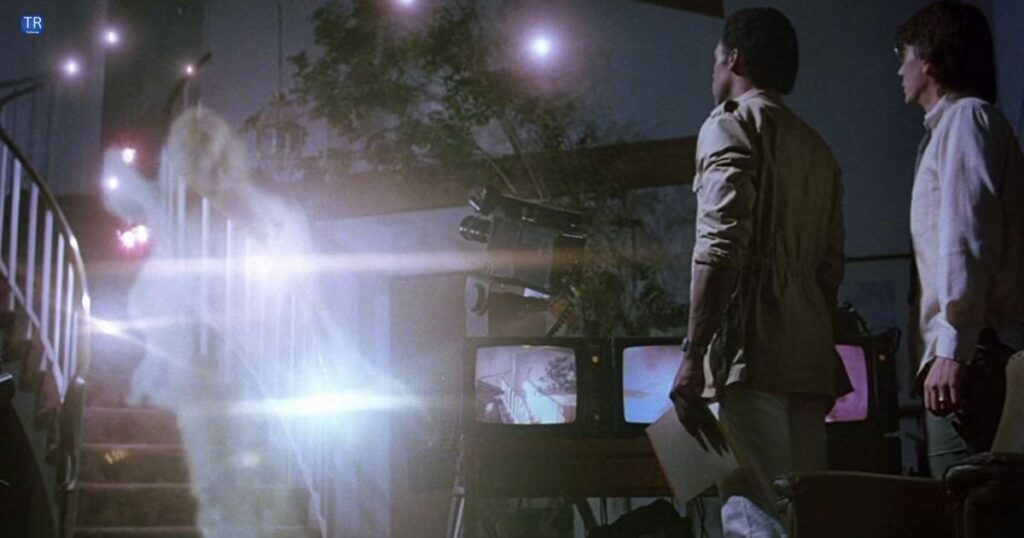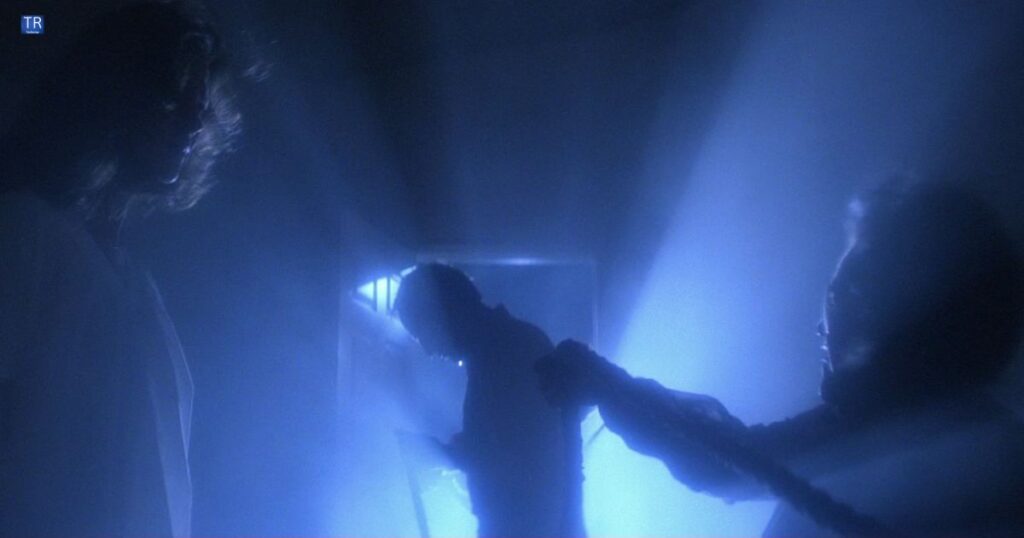The 1982 horror classic Poltergeist has captivated audiences for decades with its chilling story and groundbreaking special effects.A shocking revelation has recently come to light: the filmmakers used real human skeletons as props in certain scenes.This macabre detail adds a new layer of creepiness to the already unsettling film, but it also raises profound ethical questions about the treatment of human remains in the movie industry.
Origins of the Claim
Rumors about Poltergeist using real skeletons started soon after its release.Many fans and critics began to speculate about the authenticity of the props.JoBeth Williams, who played Diane Freeling, mentioned her discomfort during filming.She believed the skeletons were real, which fueled the speculation.
Despite her claims, there is no concrete evidence to confirm the use of real skeletons.The filmmakers have not officially verified these rumors.This lack of confirmation leaves the claim open to debate.Many still wonder if the chilling atmosphere of the film was enhanced by the use of actual human remains.
Read Also: Kelly Bates Asks Supporters Not To Take Out Their Anger On nbc 10 The Best Guide
Unveiling the Truth about the Authentic Skeletons
The truth about the skeletons used in Poltergeist was unveiled during a deposition.Special effects artist Craig Reardon revealed that the production team acquired 13 real human skeletons from India.
These skeletons were originally intended for educational purposes but were modified to appear as decaying corpses for specific scenes in the film.The use of authentic skeletons was a cost-effective decision compared to creating artificial props.
His choice has generated significant controversy and debate within the film community and among audiences.The revelation has added an eerie dimension to the film’s legacy and prompted discussions about the ethical implications of using real human remains in movie productions.
Read Also: Kelly Bates Asks Supporters Not To Take Out Their Anger On nbc 10 The Best Guide
The Unveiled Proof
The claim that Poltergeist used real skeletons is largely based on anecdotes.JoBeth Williams, who played Diane Freeling, often cites her discomfort on set.She revealed that she thought the skeletons were fake until later learning they were real.

This unsettling realization came after filming the infamous pool scene.Williams’ statement is not definitive proof.No other cast or crew members have confirmed the use of real skeletons. The eerie atmosphere of the set may have contributed to her feelings of unease.While the story is compelling, it remains primarily anecdotal.
Read Also: Pretty Lifestyle To Canada As A Panel Beater In 2024: All To Know
Insights from Spielberg and Crew Responses
When Steven Spielberg himself confirmed the use of real skeletons in Poltergeist, it sparked intense debate.The revelation generated controversy in the film industry and beyond.It left the cast grappling with moral dilemmas and a range of emotions.
Some found it unsettling and uncomfortable.Others saw it as a practical cost-saving measure. Using real human remains disturbed many people.Some appreciated the added realism it brought to the film.The crew’s responses ranged from amazement to fear. Many felt a lingering unease even after filming wrapped up.
Key crew reactions:
- Some found it disturbing and unethical
- Others saw it as a practical solution
- Caused lingering unease on set even after filming
The Influence on the Film Industry
The revelation that Poltergeist used real skeletons had a big impact on the film industry.It sparked discussions about ethics in filmmaking.Many filmmakers began to reconsider how they use props.The industry started to implement stricter regulations regarding human remains.
Today, filmmakers often rely on advanced technology like CGI.This allows them to create realistic effects without ethical concerns.The controversy has encouraged transparency in the industry.Filmmakers are now more aware of their responsibilities.They strive to respect the dignity of all individuals involved in their projects.
Contemporary Film Production and Ethical Standards
In today’s film industry, ethical standards play a crucial role in shaping how movies are made. Filmmakers are increasingly aware of their responsibilities toward their subjects, audiences and the environment.Here is A simple overview of contemporary ethical practices in film production.
| Ethical Standard | Description |
|---|---|
| Truthful Storytelling | Filmmakers should represent facts honestly and avoid embellishing narratives. |
| Respect for Privacy | Always seek consent from individuals before including them in films to protect their privacy. |
| Fair Representation | Ensure diverse voices are accurately portrayed without stereotypes. |
| Safe Working Environment | Maintain safety protocols on set to protect the health and well-being of all crew members. |
| Sustainability | Make environmentally conscious choices, such as using digital scripts and energy-efficient gear. |
| Transparency | Clearly communicate project expectations, timelines, and budgets to all involved parties. |
| Encourage Creative Freedom | Foster an environment where team members can share their ideas and creativity freely. |
These ethical standards help build trust between filmmakers and their audiences. They also ensure that the stories told are respectful and responsible, reflecting a commitment to integrity in the film
The Disturbing Trend of Fatalities After Production
After Poltergeist was released, a disturbing trend emerged.Several cast members experienced tragic fates.Dominique Dunne, who played the older sister, was murdered by her boyfriend in 1982.
Heather O’Rourke, known for her role as Carol Anne, died at just 12 years old from a misdiagnosed illness.Julian Beck, who portrayed the villain in Poltergeist II, also passed away from stomach cancer shortly after filming.
These untimely deaths sparked rumors of a Poltergeist curse.Fans and media speculated about a dark connection between the film and these tragedies.While some believe it’s just coincidence, the impact on the cast and crew was profound.Many felt a lingering sense of unease long after filming ended.The film’s legacy now carries a mix of horror and sadness.
Exploring Controversy of the 1982 movie poltergeist used real skeletons as – tymoff

Outcry from the Public and Industry Response
When the revelation about the use of real skeletons in Poltergeist surfaced, it sparked significant public outcry.Many viewers expressed outrage over the ethical implications of using human remains as props.
Advocacy groups and concerned individuals called for accountability within the film industry.The controversy led to discussions about the need for stricter regulations regarding the treatment of human remains in movies.In response, industry organizations began to develop guidelines aimed at preventing similar situations in the future.
Legal and Ethical Considerations
The use of real skeletons in Poltergeist raised important legal and ethical questions.Filmmakers must navigate complex laws regarding the handling of human remains. In many jurisdictions, there are strict regulations governing how remains should be treated.
The controversy highlighted the need for filmmakers to consider the dignity of the deceased and the potential impact on their families.As a result, the industry has shifted toward prioritizing ethical standards, ensuring that all props used in films are sourced responsibly and respectfully.
The Enduring Impact of the Departed Actors
The tragic deaths of several actors from Poltergeist have left a lasting mark on the film’s legacy.Dominique Dunne was murdered in 1982.Heather O’Rourke died from a misdiagnosed illness at just 12 years old.Julian Beck, who played a ghost in Poltergeist II, succumbed to stomach cancer.These events sparked rumors of a Poltergeist curse.
Fans and industry insiders often discuss the impact of these tragedies.Many believe the deaths add a haunting quality to the film.The stories of these actors remind us of life’s fragility.Their untimely passing evokes both fascination and sadness.The legacy of Poltergeist is forever intertwined with the memories of its departed stars.
The Emotional Toll on Cast and Crew
The On-Set Atmosphere During the Filming of “Poltergeist” Using Real Skeletons
Filming Poltergeist created a unique atmosphere on set.The use of real skeletons made many cast and crew members uneasy.They felt a constant tension due to the presence of actual human remains.
This discomfort lingered throughout the production, affecting everyone involved.The eerie ambiance added to the film’s chilling narrative, but it also created a sense of dread among the team.Many found it hard to shake off the feeling of working with something so macabre.
The Aftermath of Using Real Skeletons and an On-Set Exorcism
The unease continued even after filming wrapped.In Poltergeist II, actor Will Sampson felt so disturbed that he performed an exorcism on set.He aimed to cleanse the space of any lingering negative energy from the first film.
Sampson’s actions highlighted the deep impact that using real skeletons had on the cast and crew.His exorcism symbolized the need to address the unsettling atmosphere created by the original production choices.This incident underlined how the use of real human remains affected the emotional well being of those involved in the films.
Behind the Curtain: The Choice for Authenticity
In the making of Poltergeist, the decision to use real skeletons instead of props was shocking. This choice stemmed from a desire for authenticity.Filmmakers wanted to create a more realistic horror experience.They believed that real skeletons would enhance the film’s chilling atmosphere.

- Cost-Effective: Real skeletons were cheaper than creating plastic replicas.
- Authenticity: The filmmakers aimed for a more genuine look.
- Impact on Atmosphere: Real skeletons added an unsettling element to the scenes.
This choice sparked debates about ethics in filmmaking.It raised questions about respect for the deceased and the boundaries of artistic expression.The decision to use real human remains has left a lasting mark on Hollywood’s history.
The Wider Impact on Movie Making
Respecting Different Cultures and Backgrounds
Respecting different cultures is vital in filmmaking.Filmmakers should understand the significance of cultural elements in their stories.This includes accurate representation and avoiding stereotypes.Consulting with cultural experts can help ensure sensitivity. By honoring diverse backgrounds, films can resonate more deeply with audiences.
Encouraging Transparency and Responsibility
Transparency in filmmaking builds trust with audiences.Filmmakers should openly discuss their practices and choices.This includes how they source props and represent subjects. Responsibility means considering the impact of their work on viewers and communities.By prioritizing transparency, filmmakers can create a more ethical and respectful industry.
Understanding Viewer Anxiety: What Truly Disturbs Audiences?
Understanding viewer anxiety is key to grasping what truly disturbs audiences in horror films. Fear often stems from the unknown.When viewers face uncertainty, their imaginations run wild. This creates a sense of suspense that keeps them on edge.
Horror films tap into deep rooted fears.They explore themes like isolation, betrayal, and the supernatural.These elements resonate with audiences, making the fear feel real. Additionally, unsettling visuals and sounds heighten the emotional impact.Together, these factors create a thrilling experience that lingers long after the credits roll.
Advancements in Special Effects Technology and Their Influence
Advancements in special effects technology have transformed filmmaking.Today, filmmakers can create stunning visuals without using real human remains.CGI and advanced animatronics allow for incredible realism.These tools help bring imaginative stories to life while avoiding ethical concerns.
As a result, filmmakers can focus on creativity.They no longer need to rely on controversial methods.This shift has changed the horror genre, making it more accessible and responsible. Audiences can enjoy thrilling experiences without the discomfort of real skeletons on set.
Delving into the Fascination with Horror and Realism in Society
The tale surrounding the revelation that the 1982 movie poltergeist used real skeletons as – tymoff has sparked a great deal of intrigue among people.It highlights the strong attraction that individuals have towards frightening experiences that appear authentic.

When we immerse ourselves in horror films, we crave a sense of realism because it heightens the fear factor.The revelation of real skeletons being used in Poltergeist prompts us to contemplate why we are drawn to such realistic scars.It makes us ponder the deeper reasons behind our fascination with horror movies.
The Impact of the Poltergeist Controversy on Future Filmmaking
- The Poltergeist controversy serves as a cautionary tale for aspiring filmmakers.
- It emphasizes the importance of ethical considerations in filmmaking.
- The need for clarity, respect and responsibility when creating props is underscored.
- Poltergeist reminds filmmakers of the consequences of their decisions.
- Encourages balancing creativity with ethical integrity.
- Prompts reflection on adhering to ethical standards in the industry’s practices.
- Valuable lessons for future filmmakers about the impact of their choices.
- Highlights the lasting influence of controversial decisions made during production.
- Inspires filmmakers to prioritize transparency and responsibility in their work.
- Ensures the Poltergeist controversy continues to shape ethical filmmaking practices.
FAQ’s
Did they use real bones in Poltergeist?
Yes, real human skeletons were used as props in the 1982 movie Poltergeist due to cost effectiveness and availability.
Is the Poltergeist a true story?
Poltergeist is loosely inspired by real-life events, particularly the 1958 Herrmann House poltergeist case, but the film itself is fictional.
Was the Poltergeist movie cursed?
The Poltergeist movie is often said to be cursed due to the tragic deaths of several cast members.But most experts attribute these incidents to coincidence rather than any supernatural influence.
How scary is the original Poltergeist?
The original Poltergeist is considered quite scary, especially for its time, blending supernatural elements with a relatable suburban setting that taps into deep seated fears.
Final Words
The revelation that Poltergeist used real skeletons adds a chilling layer to its legacy.This choice raises important ethical questions for filmmakers.How far should artists go for authenticity? The controversy serves as a reminder of the responsibility filmmakers have toward their subjects and audiences.As the industry evolves, it is crucial to prioritize respect and transparency.The lessons learned from Poltergeist will continue to influence future filmmaking practices.











